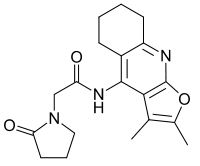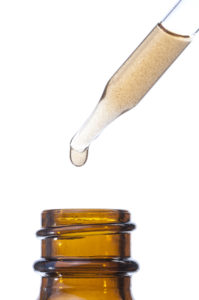Table of Contents
Key Takeaways
- Coluracetam is a fat-soluble nootropic, more potent than Piracetam, in the racetam class.
- It boosts brain choline conversion to acetylcholine (ACh), improving learning, memory, alertness, and attention.
- Coluracetam may act as an ampakine, producing stimulant-like effects without typical stimulant side effects.
- It exhibits anxiolytic qualities and has potential in treating depressive disorders without affecting serotonin levels.
- Benefits include restoring acetylcholine synthesis, improving memory, relieving severe depression and anxiety, repairing retinal and optic nerve damage, and enhancing mood and cognition.
Coluracetam (BCI-540, or MKC-231) is a fat-soluble nootropic in the racetam-class of compounds. Coluracetam is much more potent than the original racetam, Piracetam.
Coluracetam was patented by Mitsubishi Tanabe Pharma of Japan in 2005. Making it one of the newest racetam-based nootropics.
The patent for Coluracetam was later sold to BrainCells, Inc. in San Diego, California. BrainCells is a small, privately-held biopharmaceutical company specializing in developing compounds for the treatment of major depressive disorder (MDD), treatment resistant depression (TRD), and Alzheimer’s Disease.
Coluracetam is similar in structure to Piracetam. And like all racetam nootropics, has a pyrrolidone nucleus at its core. The latest clinical research indicates potential for treating depressive disorders, and retinal and optic nerve damage.
Coluracetam is a very strong choline targeting supplement. It boosts your brain’s choline conversion to acetylcholine (ACh) through the high affinity choline uptake (HACU) process. Which increases alertness, attention to detail and memory.
Some research, and personal experience shows Coluracetam may affect AMPA receptors. Making it a potential ampakine nootropic. Which could explain the stimulant-like effects without the side effects of traditional stimulants.
Coluracetam also shows some anxiolytic (anti-anxiety) qualities helping improve mood and quieting anxiety.
Coluracetam helps:
- Brain Optimization: Coluracetam is a choline uptake enhancer which boosts the effects of choline in your brain. It increases the production of acetylcholine (ACh) through HACU. Resulting in better learning and memory.[i]
- Neurotransmitters: Coluracetam reduces glutamate toxicity in your brain.[ii] Which boosts neural signaling by increasing the effectiveness of glutamate. Resulting in better focus and concentration.
- Mood & Anti-anxiety: Coluracetam is effective in treating anxiety and depression. Even in people suffering from major depression and who do not respond to SSRI’s.
What is Coluracetam?
Coluracetam is in the racetam-family of nootropic compounds. It is a fat-soluble nootropic. The racetam-class of nootropics share a pyrrolidone nucleus at their core.
Coluracetam is a High Affinity Choline Uptake Enhancer

Coluracetam is unique among the racetams in the way it targets choline in the brain. It boosts your brain’s choline conversion to acetylcholine (ACh) through the high affinity choline uptake (HACU) process.
Pramiracetam is the only other racetam that has a similar mechanism of action. By influencing the HACU process.
Coluracetam is one of the newest synthetic nootropic compounds. It is known for improving long-term memory and mood. And for enhancing sounds and color.
Coluracetam is considered to be much more potent than Piracetam. And suggested doses are much smaller – often in the 3 – 10 mg range.
Coluracetam helps increase attention span, alertness and boosts long-term memory.
Coluracetam acts like an ampakine nootropic although this hasn’t been verified in clinical trials. Ampakines tend to have a stimulant effect. But do not produce the same stimulant side effects as Ritalin or coffee.
Coluracetam vs. Piracetam: What’s the Difference?
Piracetam, the original racetam that started the nootropic movement, is a cyclic derivative of GABA. It affects the neurotransmitter acetylcholine (ACh) by helping ACh receptors accept, or be more sensitive to acetylcholine.
Coluracetam also boosts acetylcholine in the brain. But through a different mechanism of action. Rather than making the ACh receptors more sensitive to ACh, it actually increases the synthesis of acetylcholine from choline. By affecting the high affinity choline uptake (HACU) process.
How does Coluracetam Work in the Brain?
Coluracetam boosts brain health and function in several ways. But two in particular stand out.
- Coluracetam boosts your brain’s choline uptake by targeting and working with the high affinity choline uptake (HACU) process in the brain’s neurons.
Acetylcholine (ACh) is made up of choline and acetate. These must be available to the neuron terminal at all times. So that ACh can be synthesized whenever it is needed.
Free choline circulating in the blood crosses the blood-brain barrier. And is taken up by cholinergic neuron terminals. It gets taken into the neuron by the high affinity choline uptake (HACU) system.[iii]
The synthesis of ACh takes place in the synaptic cleft. The space between neurons as it travels into the neuron. In animal experiments, Coluracetam has been shown to reverse decreased hippocampal acetylcholine induced by a reduction in high affinity choline uptake.
The HACU system is temperature-, energy-, and sodium-dependent. This system is the primary means by which choline needed for the synthesis of ACh is transported into the neuron. And is the rate-limiting step in the production of this critical neurotransmitter.[iv]
 When this system breaks down or doesn’t work as efficiently as it was designed, you experience problems with memory, learning, and brain fog.
When this system breaks down or doesn’t work as efficiently as it was designed, you experience problems with memory, learning, and brain fog.
Coluracetam effects this process (ameliorates working memory deficits) and helps it work more efficiently. In fact, it seems to boost the HACU process. Even in damaged neurons.
Increased acetylcholine in neurons helps improve memory, boosts cognition and provides better decision-making capabilities.
- Coluracetam also seems to improve AMPA potentiation. AMPA receptors are affected by glutamate. Which works in the brain and central nervous system to improve alertness and cognition.
Coluracetam works with both AMPA potentiation and choline uptake enhancement. This combination seems to help improve mood disorders without affecting serotonin levels.
Serotonin Selective Reuptake Inhibitors (SSRIs) is the current preferred mainstream medical method for dealing with mood disorders and depression. They come with a list of detrimental side effects. And don’t work for every depressed patient.
Researchers reported that Coluracetam was beneficial in treating major clinical depression and anxiety disorder.[v] Without affecting serotonin levels in the brain. And without the side effects that go with disrupting serotonin.
How things go bad:
As we get older, our brain chemistry and energy metabolism changes.
↓ Brain cell membranes degenerate
↓ Recall, reaction time and mood diminish
↓ Conversion of choline to acetylcholine breaks down
↓ Acetylcholine levels decline
All of these changes can happen at any age. And are a product of the food we eat, what we drink, lifestyle habits, the air we breathe and more.
So Coluracetam can help mood disorders and age-related cognitive decline. But it works as well for the student looking to do better in school. By boosting acetylcholine and controlling glutamate in the brain.
Coluracetam benefits
Research from a very limited number of studies have shown that Coluracetam will:
- Restore the synthesis of acetylcholine
- Restore long-term memory
- Improve working memory
- Relieve symptoms of severe depression
- Treat symptoms of generalized anxiety disorder
- Increase choline uptake even in damaged neurons
- Repair retinal and optic nerve damage
The benefits from supplementing with Coluracetam seem to be long-lasting. Even after supplementation has stopped.
How does Coluracetam feel?
Even with very small doses of Coluracetam you should experience a decrease in anxiety and improved mood. Overall energy levels should go up.
Unlike the effect commonly produced by stimulants, Coluracetam offers a more relaxed, calm and free-minded kind of thought-processing.
Coluracetam acts quickly to boost long-term and working memory and word-recall. And many nootropic-users report that colors are crisper, or enhanced. Sound and audio seems to wash through you.
Some even report that Coluracetam enhances meditation. There is an extremely pleasant sense of being at peace with the world.
Coluracetam Clinical Research
Coluracetam was first discovered the late 1990’s. And because it’s so new, very few clinical trials have been done with humans. Most of the clinical research available to us has been done on animals.
BrainCells, Inc., who acquired the patent from the company that first developed Coluracetam, have begun human trials. Here we have two examples of the clinical research done in the last 15 years on animals.
Coluracetam Provides Long-lasting Cognitive Improvement
Researchers in Japan worked with rats whose memory was chemically impaired. In this study, rats were dosed with Coluracetam (MKC-231) for 8 days.
The team studied the effects on the high affinity choline uptake (HACU) system of the rats after 8-days of repeated administration of Coluracetam treatment.
They reported an increase of HACU activity along with a boost in cognition. And concluded that Coluracetam “could induce long-lasting pro-cognitive effects by changing the choline transporter regulation system”.[vi]
Coluracetam Improves Working Memory
A study at Iwate Medical University in Japan was done on mice with working memory deficits. In this study, scientists found that Coluracetam improved working memory at all doses tested.
They found it significantly reversed an acetylcholine deficit. And concluded that Coluracetam improved memory deficits by boosting high affinity choline uptake (HACU), and the release of acetylcholine.[vii]
Coluracetam Dosage
Recommended Coluracetam dosage is 20 – 80 mg per day. So 20 mg would be taken in two 10 mg doses. One Coluracetam dose in the morning, and one in the early afternoon.
Higher doses of Coluracetam are based on clinical trials mostly done on animals. When first adding Coluracetam to your stack, most neurohackers start out with a much smaller dose. And see how you react to it.
 Coluracetam is typically sold in powder form. Smaller doses are often taken sublingually for faster and better absorption.
Coluracetam is typically sold in powder form. Smaller doses are often taken sublingually for faster and better absorption.
Since Coluracetam is a fat-soluble nootropic, you should take it with a meal containing healthy fats. Or with a tablespoon of unrefined coconut oil.
My preferred healthy fat is a tablespoon of the new organic, non-GMO Performance Lab® MCT Oil.
Coluracetam Side Effects
Coluracetam is non-toxic. So is considered well-tolerated and safe.
Many first-time users of Coluracetam report fatigue which is often the result of starting with too high a dose.
Remember, Coluracetam works by enhancing choline uptake in your brain. Choline is a precursor to the production of acetylcholine. If not enough choline is available in your system, you’ll feel the side effects.
Side effects are rare but can include anxiety, fatigue, headaches, nervousness and nausea. Again, side effects are often a result of unusually high doses of the nootropic.
Headaches from using Coluracetam typically happen when you forget to combine it with a good choline supplement. Headaches are often a symptom of a choline deficit in your brain.
Where to buy Coluracetam
Coluracetam is usually sold in powder form. A couple of companies offer it in a liquid base making it easier to dose and take sublingually.
The best place to buy Coluracetam is: Click for Science.bio – Coluracetam who sell Coluracetam as a “research” compound. It is sold to be used in an academic laboratory research setting. They go on to state “nothing we sell is intended for nor is it manufactured for diagnostic or therapeutic purposes in humans.”
Nootropics Expert Recommendation
Coluracetam 20 – 80 mg per day
 I recommend using Coluracetam as a nootropic supplement.
I recommend using Coluracetam as a nootropic supplement.
Your body does not make Coluracetam on its own. So to get its benefits you must take it as a supplement.
Coluracetam is unique among racetams because it is a high affinity choline uptake (HACU) enhancer.
Coluracetam is especially helpful for restoring long-term memory, boosting cognition and better decision-making. All benefits associated with improved choline uptake into neurons. And the improved synthesis of acetylcholine.
Coluracetam also has a strong, albeit brief history of treating major depression. For the healthy neurohacker you’ll get the benefit of a sense of contentment and peace.
And as an added bonus, the extra choline activity affects optic nerves. So you may experience enhanced colors and sound.
The positive effects of Coluracetam appear to be at least semi-permanent. The benefits continue even after it leaves your system.
You should use Coluracetam with a good choline supplement like Alpha GPC or CDP-Choline. It helps boost acetylcholine synthesis, so demands the presence of more choline in your brain.
Clinical trials say you can safely boost daily intake of Coluracetam to 200 mg for major depressive disorder if needed. But we suggest starting with 20 mg per day. And increasing your doses only after you see how it works in your system.
And Coluracetam is a fat-soluble nootropic so for proper absorption into cells must be taken with a healthy fat like unrefined coconut oil, or extra virgin olive oil. My preferred healthy fat is a tablespoon of the new organic, non-GMO Performance Lab® MCT Oil.
The best place to buy Coluracetam is Click for Science.bio – Coluracetam
NOTE: Science.bio states on their FAQ page, “Our products are manufactured and sold to be used in an academic laboratory research setting. Nothing we sell is intended for nor is it manufactured for diagnostic or therapeutic purposes in humans.” This statement is required because the FDA has not classified nor approved Coluracetam as a “dietary supplement” in the USA.









Join The Discussion - 77 comments
Kyle
February 9, 2022
Is this safe to combine with other racetams?
David Tomen
February 10, 2022
Kyle, theoretically it is safe but I suggest you don’t use any more than two at at time. Keep in mind these racetams were developed and are used as prescription drugs in some countries. For example, you don’t stack various benzos or SSRIs for a more dramatic effect. Any of the racetams need to be treated with the same respect.
Don
August 12, 2020
Hi David, I went to hrsupplements to look for Coluracetam, then I read the terms of service where I read all the Red print with all the Warnings, like don’t take any of these products if you have anxiety…what is your view on these statements?
Thanks
Don
David Tomen
August 14, 2020
Don, in a word “liability”. Because like all of the racetams, they were developed as prescription drugs. And many are still sold by prescription in some countries.
The racetams are not considered “dietary supplements” by the FDA in the USA. And cannot be sold as dietary supplements. Instead, they’re sold as ‘research compounds’ and you accept all the ‘risk’ when buying them and use them as nootropics. Some packages will even say “not for human consumption”.
I stand by my “Side Effects” section above in this review. Like any nootropic supplement you need to be aware of potential side effects. And the chance that it may be contraindicated with some prescription drugs or certain health conditions.
Larry Trowbridge
August 8, 2020
A new question about Coluracetam: Given that Pramiracetam and Coluracetam both are known for their HACU characteristics, would using them together in a stack be okay? For example, 300 mg Pramiracetam along with 40 mg Coluracetam. Also, given the HACU characteristics, would 300 mg CDP Choline be excessive if those two were used together?
David Tomen
August 9, 2020
Larry, you could use them together but not sure why you would want to. If stacked you may need to increase your CDP-Choline because of how they influence acetylcholine in your brain. If you normally use 300 mg CDP-Choline I’d try that and then try 600 mg the next time. And see if you experience anything different.
Larry Trowbridge
August 9, 2020
I was wondering about the coluracetam for the benefits it has for eyesight. Up until I was just past 50, I’ve never needed eyeglasses, and even now it’s only for reading; distance vision was slightly better than 20/15 last December. My thought was that coluracetam could be just enough to be able to ditch the glasses. I suppose rather than an either/or choice, perhaps an every other day or every other dose approach may work as well. I will try both for a week or two, while using your advice, and see how it goes. Thanks so much for the advice and your time David, it’s greatly appreciated.
David Tomen
August 10, 2020
Larry, Coluracetam may help but I think a far better choice for you is the Performance Lab Vision supplement: https://nootropicsexpert.com/performance-lab-vision-review/. Please read that review because this is one of the best and most effective supplements they make in my opinion.
Larry Trowbridge
July 25, 2020
I have slightly modified my stack since I last asked a question about coluracetam. The following list is taken 3x daily:
1x MLP
1x PL Men’s Daily
1x PL T-Boost
1x Uridine Monophosphate
1x NAC 600 mg
400 mg l-theanine
1x Norwegian Fish Oil- 500 mg DHA, 100 mg EPA
100 mg moda
40 mg Coluracetam
Is the fish oil capsule enough fat for the 40 mg coluracetam (or 300 mg pramiracetam) absorption? I’ve been having some amazing results with intermittent fasting and am trying to keep calories down until after I get home from work. After our 3 month break from COVID (March 18-June 4) I was at the 3rd notch on my belt and am now at that awkward point where the 4th notch is a bit loose and the 5th is a bit tight…sometimes.
David Tomen
July 26, 2020
Larry, it’s not likely enough fat to get the full benefit from the fat-soluble supplements in your stack. And some of the vitamins and minerals in PL for men are fat-soluble too. Why not take it with a tablespoon of MCT Oil? Not fattening and immediately turns into ketones.
Larry Trowbridge
July 27, 2020
Thanks for the information David. I seem to have some issues with MCT, even at doses as low as 15 ml (1/2 TBSP?) I don’t know if I need to ramp it up slower or if I just can’t take it. Does trying do 15 ml once a day for a day or two, then go to twice, and so on until I can get to 3x, then after that, I’ll try 1x @ 30 ml and 2x @ 15 ml and keep going until I can get to 30 ml 3x sound like a good plan?
David Tomen
July 28, 2020
Larry, whatever works best for you. If you’re using MCT Oil just for the healthy fat you can try something else like Extra Virgin Olive Oil if your system can’t take coconut oil.
anthony
July 13, 2020
Hi David 🙂
I want to add Coluracetam to my stack but i use 50mg Dosulepin TCA antidepressants before bed.
It seems that Coluracetam works on acetylcholine (ACh) but i just want to be sure. they don’t raise serotonin, nor adrenaline or dopamine levels right?
Is it possible to use Coluracetam with Dosulepin?
David Tomen
July 13, 2020
Anthony, Dosulepin is an antagonist of muscarinic acetylcholine receptors as well. So it will likely potentiate the effects of Coluracetam. And I’m not sure how that will work out. Because it may take more Alpha GPC or CDP-Choline than you’d normally stack with Coluracetam.
But this a complete unknown and I’m not sure I’d risk it.
Larry Trowbridge
December 28, 2019
A couple of questions about coluracetam dosing and choline amounts:
1) Would 1x MLP, 1x T-boost, 250 mg CDP, 250 mg UMP, and 20 mg Coluracetam (3x/day-first dose when I get up and the last dose approx. 1:30 pm and the second around the mid-point) be a good combination?
2) And would adding the following to the above work: 10 mg vinpocitine, 400 mg l-theanine, 100 mg Moda, 1000 mg DHA, and 3x 1TBSP MCT. I suspect I may know what your response to one of the items in this group may be 😉 so a bit of explanation may be in order: I’m up every morning at 3:30 am, at work (mig-welder) by 5:00 am, go home at 2:30 pm, and bedtime at 9:00 pm.
2a) Would Oxi and/or Ani be of any benefit to group 2 above?
David Tomen
December 28, 2019
Larry, both stacks should work well. But you may need to increase your CDP-Choline dosage. Try your suggestion first and if you get a racetam-headache you’ll know to increase your choline supplement.
For you last question, I’d choose Aniracetam because I’ve used it for over 12 years and it works very well for me. But you may want to give each a one month trial and see which one works best for you. Or you may find you don’t get any benefit at all. Only way to find out is to try …
Larry Trowbridge
December 28, 2019
Ok, I was kind of leaning that way, however, I thought I remembered seeing somewhere that Aniracetam was recommended to be stacked with CDP choline at 1:5 or 1:4 ratio (1000 mg aniracetam 200 mg CDP/1000 mg aniracetam 250 mg CDP). With one capsule of MLP and 250 mg capsule of CDP I came up with 375 mg of CDP and according to that, it SHOULD be enough for the aniracetam, but wasn’t sure if adding the coluracetam would make it too low despite the HACU (?) properties of the coluracetam. Also, the question between oxi and ani was due to coluracetam’s anxyiolitic properties and didn’t know if there would be too much redundancy? I know with brain chemistry YMMV is a real factor, but ratios, to me, seem to be a nice ballpark starting figure.
Once again David, thanks so much for your willingness to share your knowledge! I think I may try your suggestion tomorrow so if it doesn’t go so well, can try to fix it at home rather than at work. 🙂
Fahad Al Absi
November 10, 2019
I love your website it’s very informative, I have A question though other websites mention it gives people suicidal thoughts now in your opinion and research is that true and on which bases.
David Tomen
November 10, 2019
Fahad, it never same up in my research when writing this review. And I have not seen any clinical evidence of this type of side effect. But if you find something please let me know. Personal opinion doesn’t count. Only peer-reviewed clinical studies if you find any.
But here’s a suggestion for you. If you come across anything like this find out what dosages were reported. Because side effects sometimes only show up when someone does not follow dosage instructions and their dosage is much too high.
CC
October 8, 2019
Can I take this alongside conservative dosing of Aniracetam? (I have been taking Aniracetam for some time, but am seeking the vision / eye health benefits of this.
Many thanks –
David Tomen
October 9, 2019
Chelsea, you can use this with Aniracetam. Both boost acetylcholine but Coluracetam does it through high affinity choline uptake (HACU) process. But since they both boost acetylcholine I suggest using the lower end of dosage and make sure you are using enough of a choline supplement like Alpha GPC or CDP-Choline.
Something else to consider is the best vision supplement I’ve ever tried. You can check Performance Lab Vision out here: https://nootropicsexpert.com/performance-lab-vision-review/
Chelsea
October 21, 2019
Thank you!